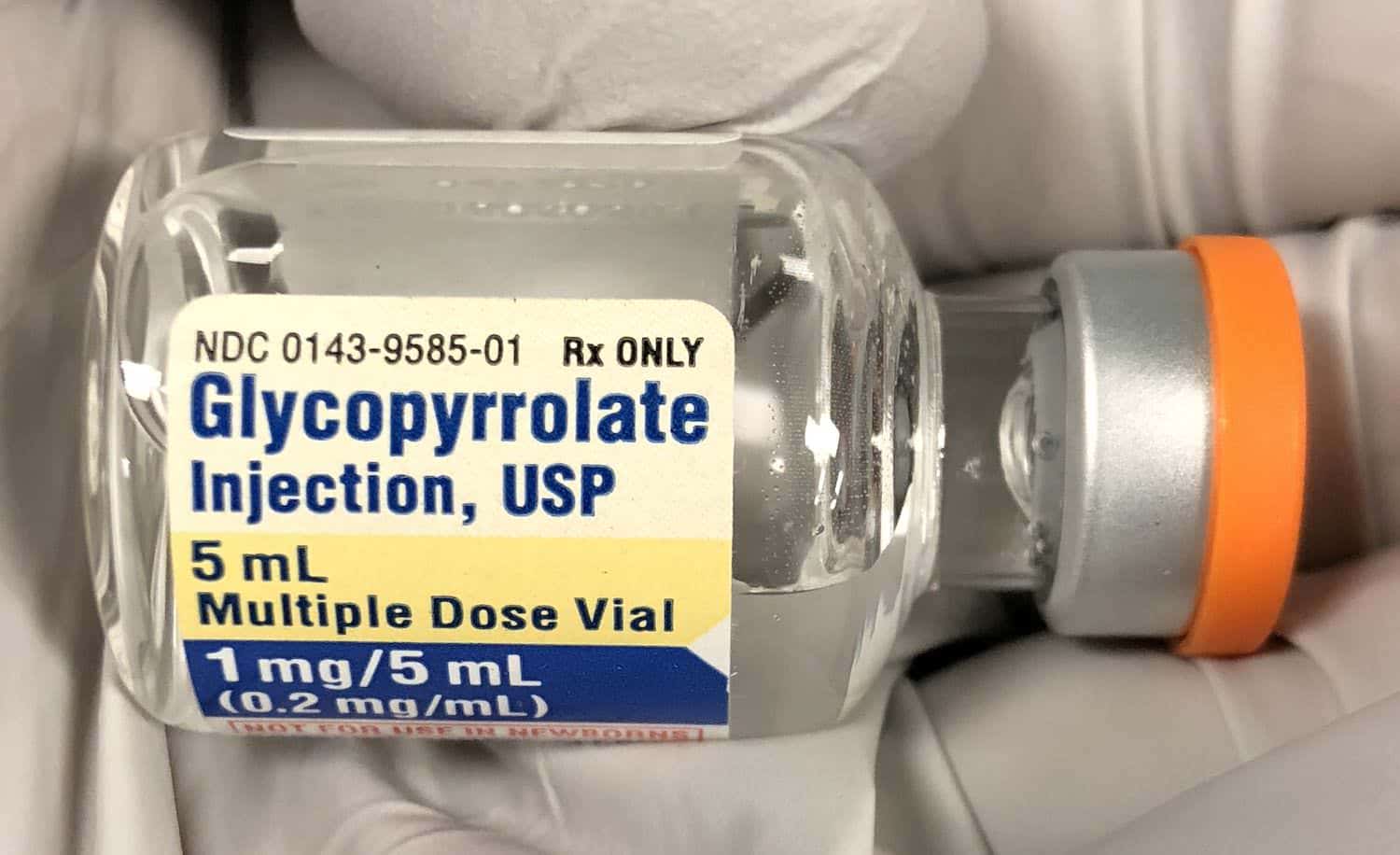Glycopyrrolate (Robinul) is an anticholinergic (specifically an anti-muscarinic) that works on peripheral acetylcholine receptors in the heart (SA node, AV node), exocrine glands, and smooth muscle. Because of its polar, quaternary amine structure, it does NOT cross the blood-brain barrier unlike anticholinergics like atropine and scopolamine. Glycopyrrolate causes mydriasis (pupil dilation) which can lead to acute angle closure glaucoma in susceptible patients and catastrophic increases in intraocular pressure. Remember to review your patients’ history beforehand!

As an anesthesiologist, I administer intravenous glycopyrrolate (0.1 mg – 1.0 mg) to decrease tracheobronchial/pharyngeal secretions (ie, in preparation for local anesthetic topicalization prior to an awake fiberoptic intubation), to mitigate the cholinergic effects of neuromuscular blocking agent reversal agents like neostigmine (ie, bradycardia), and to offset vagal tone issues causing bradycardia from the oculocardiac reflex, peritoneal stretching during laparoscopic insufflation, etc.
As an intensivist, I’ve used glycopyrrolate to treat secretions from ketamine analgesia/sedation, to determine if increasing a patient’s heart rate will help their cardiac output, and often times as a part of “comfort care” measures to combat air hunger/dyspnea in tandem with anxiolytics and analgesics.
Interestingly, glycopyrrolate recently obtained FDA approval to treat excessive underarm sweating – the first drug approved for hyperhidrosis!
Drop me a comment below with questions! 🙂





